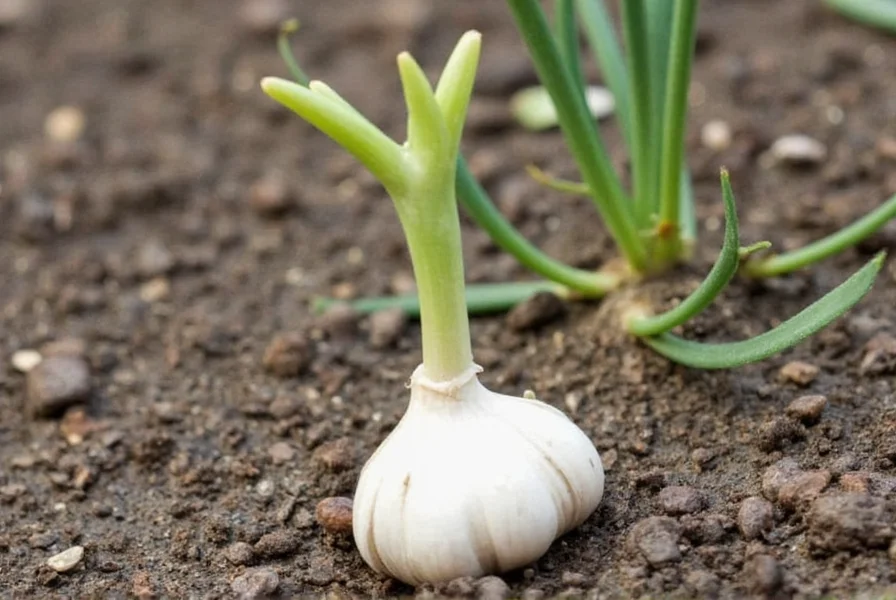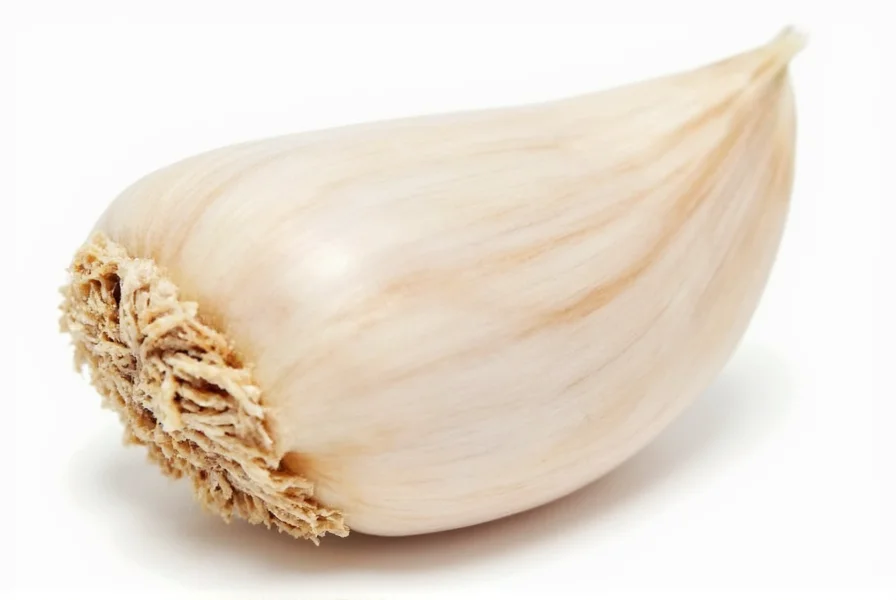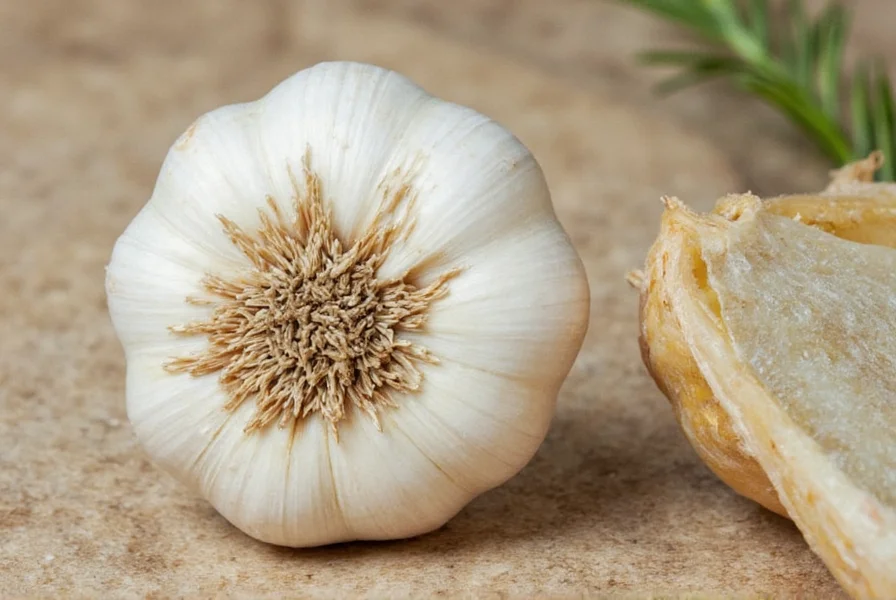Garlic cultivation from individual cloves represents one of the most straightforward gardening projects for both beginners and experienced growers. Unlike many crops requiring seeds, garlic reproduces vegetatively through cloves, making the process remarkably simple and reliable. This guide provides comprehensive, science-based instructions for successfully growing garlic from a single clove to a full bulb harvest.
Understanding Garlic Types: Hardneck vs. Softneck
Before planting, identify which garlic variety you're working with, as this affects planting timing and care requirements:
| Characteristic | Hardneck Garlic | Softneck Garlic |
|---|---|---|
| Cold Tolerance | High (best for northern climates) | Moderate (better for southern climates) |
| Storage Life | 5-8 months | 9-12 months |
| Edible Scapes | Yes (curly flower stalks) | No |
| Number of Cloves | 4-12 large, uniform cloves | 12-40 smaller, irregular cloves |
Selecting the Right Cloves for Planting
Not all garlic cloves will produce optimal results. For best outcomes when learning how to plant garlic cloves in garden settings:
- Choose plump, firm cloves without blemishes or mold
- Use organic garlic bulbs when possible (supermarket garlic may be treated with sprout inhibitors)
- Select the largest cloves from each bulb for planting
- Keep the papery husk intact until planting
Many gardeners wonder about growing garlic from supermarket cloves. While possible, store-bought garlic often contains growth inhibitors that reduce success rates. For reliable results, source planting stock from garden centers or seed catalogs specializing in garlic varieties suited to your climate zone.

Optimal Planting Timing: When to Plant Garlic Cloves
The best time to plant garlic cloves depends on your climate and garlic type:
- Fall planting (recommended): 4-6 weeks before first hard frost (typically September to November in northern zones, October to December in southern zones)
- Spring planting: As soon as soil can be worked (late February to April), though bulbs may be smaller
Fall planting allows cloves to develop root systems before winter dormancy, resulting in larger bulbs. The cold period triggers proper bulb formation through vernalization—a biological process requiring exposure to cold temperatures.
Soil Preparation and Planting Technique
Proper soil conditions significantly impact your success with garlic planting depth and spacing:
- Choose a location with full sun (6-8 hours daily)
- Prepare soil to 12-inch depth, removing rocks and debris
- Amend with 2-3 inches of compost or well-rotted manure
- Ensure soil pH between 6.0-7.5 (slightly acidic to neutral)
- Plant cloves 2-4 inches deep (deeper in colder climates), pointed end up
- Space cloves 4-6 inches apart in rows 12-18 inches apart
- Cover with soil and apply 2-4 inches of mulch (straw or leaves)
Avoid planting too shallow, which can expose developing bulbs, or too deep, which may delay emergence. The garlic planting depth and spacing recommendations ensure adequate room for bulb development while preventing overcrowding.
Caring for Growing Garlic Plants
Proper care throughout the growing season affects your final harvest quality:
- Watering: Provide 1 inch of water weekly during active growth; reduce watering 2-3 weeks before harvest
- Weeding: Hand-pull weeds carefully to avoid damaging shallow roots
- Fertilizing: Apply balanced fertilizer when growth resumes in spring
- Scaping: For hardneck varieties, remove scapes when they curl (improves bulb size)
Understanding caring for garlic plants through each growth stage prevents common mistakes like overwatering during bulb formation, which can cause rot or splitting.

Harvesting and Curing Your Garlic
Knowing when to harvest homegrown garlic is crucial for storage quality:
- Harvest when 1/3 to 1/2 of leaves turn brown (typically late spring to mid-summer)
- Loosen soil with a garden fork before pulling
- Cure bulbs in a warm, dry, well-ventilated area for 2-3 weeks
- Trim roots and stems after curing
- Store in mesh bags at 60-65°F with 60-70% humidity
The how long does it take to grow garlic from a clove timeline typically ranges from 180-270 days depending on variety and growing conditions. Patience is essential—harvesting too early yields small bulbs, while waiting too long causes cloves to separate and reduce storage life.
Troubleshooting Common Garlic Growing Problems
Address these frequent issues when growing garlic from cloves:
- Yellowing leaves: Could indicate overwatering, nutrient deficiency, or pests
- Small bulbs: Often caused by late planting, poor soil, or overcrowding
- Mold or rot: Usually from excessive moisture or poor drainage
- No bulb formation: May result from insufficient cold period or using non-planting stock
For persistent problems, consider soil testing to identify nutrient deficiencies or pH imbalances affecting your garlic's development.
Frequently Asked Questions
Can I grow garlic from grocery store cloves?
While possible, grocery store garlic often contains sprout inhibitors that reduce success rates. For reliable results, use organic garlic or cloves specifically sold for planting, as these haven't been treated with growth inhibitors and are varieties suited to your climate zone.
How deep should I plant garlic cloves?
Plant garlic cloves 2-4 inches deep, with the pointed end facing up. In colder climates, plant deeper (4 inches) for winter protection. In warmer zones, 2 inches is sufficient. Proper planting depth prevents exposure of developing bulbs while allowing easy emergence of shoots.
How long does it take for garlic to grow from a clove?
Most garlic varieties take 6-9 months to mature from planting to harvest. Fall-planted garlic typically matures in late spring to mid-summer (about 210 days), while spring-planted garlic may take slightly less time but often produces smaller bulbs. Hardneck varieties develop scapes in late spring before harvest.
Should I remove the papery skin from garlic cloves before planting?
No, keep the papery husk intact until planting. The protective skin prevents moisture loss and reduces disease risk. Only separate cloves from the bulb immediately before planting to maintain viability. Damaged or peeled cloves are more susceptible to drying out or rotting in the soil.
Why didn't my garlic form bulbs?
Common reasons include: insufficient cold period (garlic needs vernalization), using non-planting stock garlic with growth inhibitors, planting too late in spring, poor soil conditions, or overcrowding. Hardneck varieties particularly require adequate cold exposure (4-8 weeks below 40°F) to trigger proper bulb formation.











 浙公网安备
33010002000092号
浙公网安备
33010002000092号 浙B2-20120091-4
浙B2-20120091-4